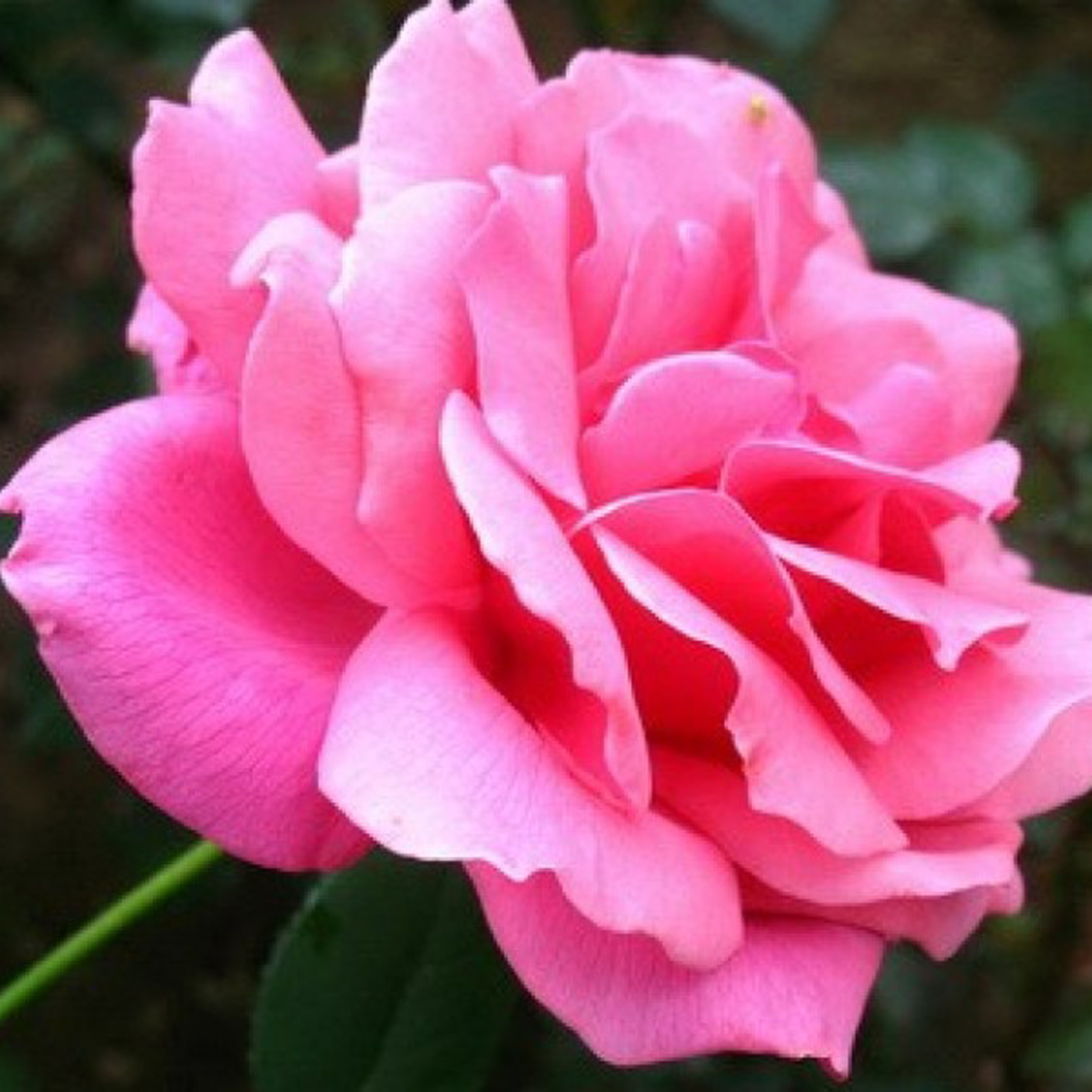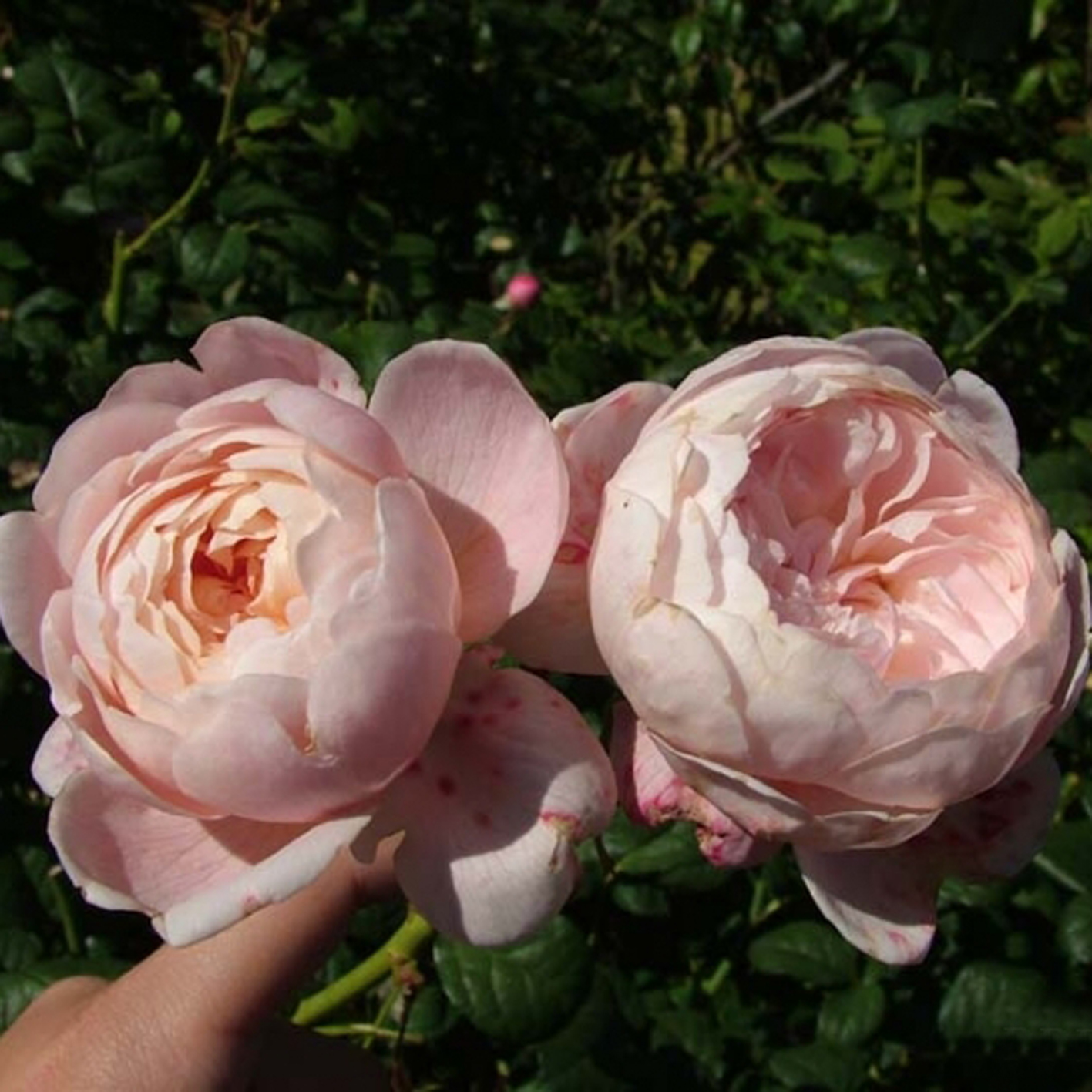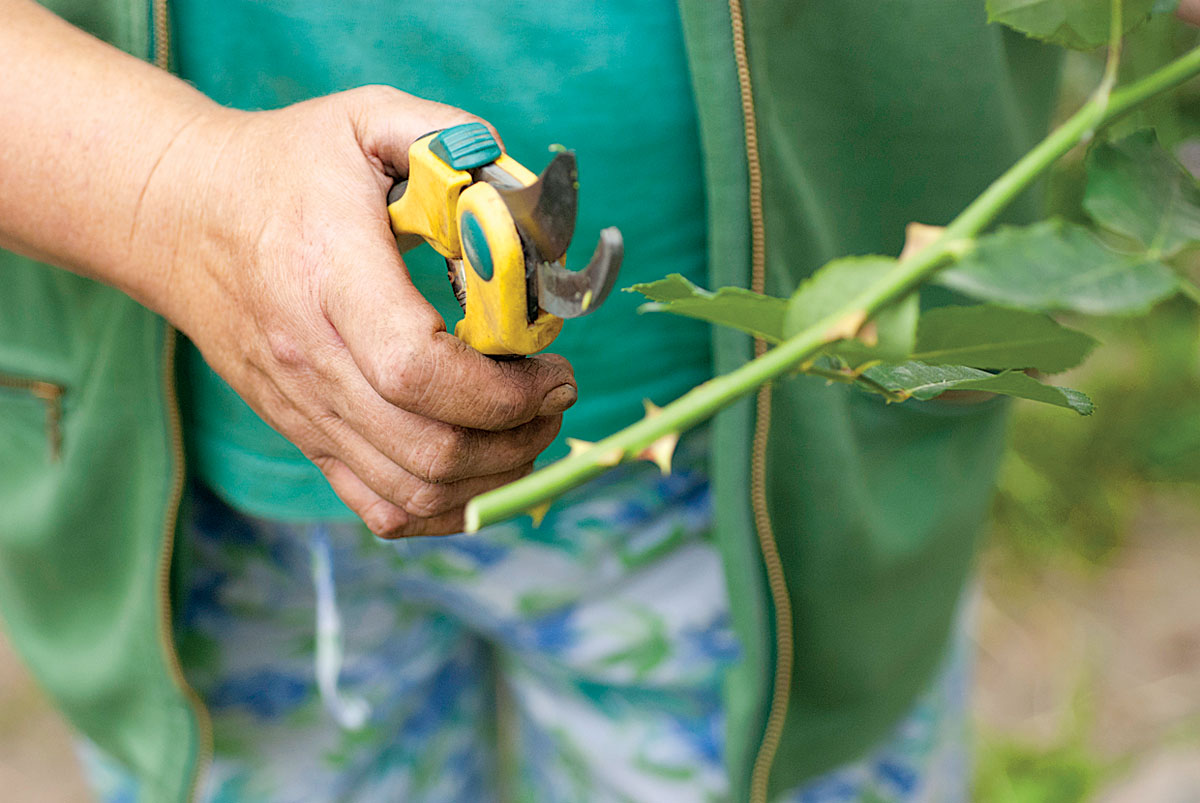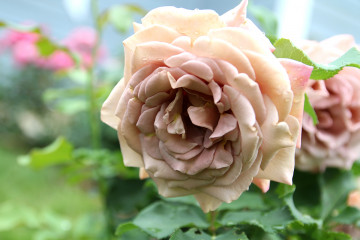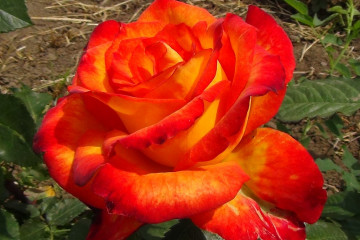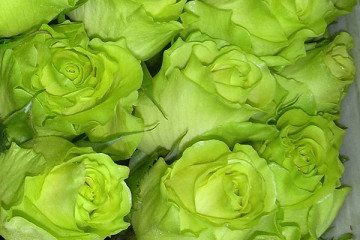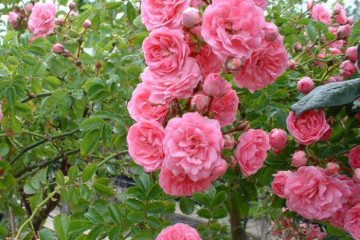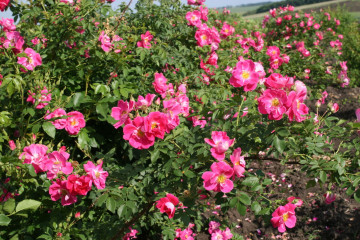Rose Queen Elizabeth (Queen Elizabeth) - description of a varietal plant
Content:
Rose Queen Elizabeth (The Queen Elizabeth Rose, or Queen of England rose) got its name in honor of Queen Elizabeth II of England. She combined the advantages of two types - floribunda and tea. In some sources it is called grandiflora.
Brief description of the variety
The Queen Elizabeth variety is large-sized pink flowers. The aroma is practically not felt. The petals inside the inflorescence are slightly closed. The core is loose. Each flower has 25 petals. The diameter of a full flower is up to 10 cm. The buds are light red in color, they are slightly elongated. When the bud opens, the color of the petals changes. The rose reaches a height of 180 cm. On the trunk there are large leaves of a dark green color. Young leaves are reddish. It is unpretentious in cultivation.
Variety characteristics:
- high bush height, up to 2 m;
- the outer petals are bent down and have a wavy shape;
- buds change their shape from goblet to flat. The color turns to pink;
- the aroma of roses is practically not felt.
Advantages and disadvantages of the variety
Rose Elizabeth has the following benefits:
- flowering takes place for a long time;
- reproduction is possible in different ways. Mostly cuttings are used, as it is considered the simplest;
- immunity to diseases and pests is very high;
- good frost resistance and resistance to temperature extremes.
Use in landscape design
By decorating a yard or garden with these flowers, the site will become much more beautiful and brighter. The large size of the rose will help to use it not only as a decoration, but also as a magnificent background.
When composing flower arrangements, you need to take into account the shade of the Queen rose. Blue, purple, white and other cold shades will be perfectly combined in colors. It is better to use the draping method. In it, low-growing flowers are planted in front of the Queen Elizabeth variety. This option will be ideal for planting and will hide the bald stalk.
Growing a flower
Floribunda Queen Elizabeth rose is grown from seedlings, seeds.
What time is the boarding
Planting roses is controversial. In the Middle Lane, spring is considered the best time, in the southern regions - before the first frosts, that is, at the end of November. In Europe, it is carried out at the end of autumn.
Seat selection
For better development and growth of the bush, it is necessary to choose a place with a suitable temperature, lighting, humidity, etc. The site for planting is selected dry and not too sunny. It should be borne in mind that a little shade at lunchtime will be needed. Dark buds attract more sunlight to them, which makes them lighter.
Places not recommended for landing:
- near old bushes;
- near trees;
- in a shady area;
- on the windy side of the garden.
How to prepare the soil for planting
You can buy soil for planting flowers and plants at the store or make your own. The procedure is performed at the end of summer. For favorable planting conditions, phosphorus fertilizers are introduced into the soil, the sod layer is removed, sand, clay, lime are distributed in an even ratio. After all these procedures, a deep digging of the earth is carried out. After six months, the soil should be loosened again and the same procedures should be repeated. The final step will be to dig the earth to a depth of 25 cm. Now the earth is ready for planting roses.
Planting procedure step by step
Step-by-step instructions on how to plant a rose:
- Pits for seedlings are dug on the prepared land. The depth of the hole is calculated by the formula: +15 cm to the size of the root.
- Compost or humus and earth are poured at the bottom.
- The roots are placed in the hole.
- Everything wakes up with sand and is filled with a lot of water. You need to be careful not to get liquid on the foliage, otherwise there is a risk of getting sunburn.
- The last step is to mulch the soil with compost or humus.
In this form, the seedling is left for 2 days.
Plant care
Basic requirements for caring for Queen Elizabeth roses:
- a lot of heat and light;
- timely watering and spraying of leaves;
- application of balanced fertilizers 2 times a month;
- abundant watering is necessary only during transplantation or flowering, otherwise as the soil dries out;
- during the winter cold, the bush should be covered and all conditions for favorable growth should be created.
Watering rules and humidity
Watering occurs as needed. The main thing is not to allow transfusions, once a week is the best option. In the summer season, mulching of the land is carried out. It promotes less water evaporation.
Top dressing and soil quality
The Queen Elizabeth rose especially needs additional feeding. This is necessary for normal growth. Organic matter (compost), minerals are suitable.
Pruning and replanting
For a neat look of the bush and the splendor of the form, pruning is carried out. The best time for the procedure is spring. Old shoots and damaged leaves are removed. Too long shoots are also cut off.
Features of wintering a flower
Rose varieties Elizabeth needs a mandatory shelter for the winter. It is better to make it air-dry. This is a frame 60 cm high, made of metal rods or plastic pipes, etc. It is installed over the bush before the first frost. The bushes are cleared of leaves, treated with vitriol solution and covered with sand. Then the roses are tied, bent to the ground and fixed. The frame is lined with spruce branches. The earth is covered with peat.
Blooming rose
The rose blooms in May and lasts two months. This is quite long compared to other rosé varieties. The end of activity comes in early autumn.
Care during and after flowering
During the growing season, roses need balanced feeding and regular watering. After the first year of planting, mineral fertilizing is not necessary. The appearance of buds symbolizes the beginning of the introduction of organic fertilizers into the soil. This can be infusion of mullein or infusion of chicken droppings.
In the second year, roses are fed regularly.
During flowering, the bush is watered with sodium humate. The proportions should be 2 liters of solution per bush (1 tablespoon per 30 liters of water). Also, preventive spraying against pests with epin is performed.
What to do if it does not bloom
There are several reasons why Queen Elizabeth's roses do not bloom:
- the time has not come. Young roses usually bloom by the second year of life;
- an unfavorable landing site was chosen;
- incorrect or untimely trimming was done;
- the plant is not fed;
- excess of minerals;
- leaf burns;
- large age of the bush.
Flower propagation
There are several ways to propagate the Queen Elizabeth rose:
- cuttings;
- dividing the bush;
- layering.
- Propagation by cuttings. Ripe shoots 5 mm thick are cut into several cuttings. Each should have three healthy kidneys. A cut is made from below and above at a distance of 1 cm from the edge. It is not recommended to pick off the top leaves from the stems. Cuttings are buried in pots, and when they take root, they are planted in open ground.
- Division of the bush. The bush is dug up and divided into several parts with a secateurs. Long roots are cut off. The buds on the stem should be turned outward when planting.
- Reproduction method by layering. You will need soil fertilized with peat in advance. An 8 cm incision is made on a mature shoot for rooting. A match is inserted into the cut with the head inward. The layering is bent to the ground. The other end of the match must be stuck into the ground. All are sprinkled with peat or humus. It is not recommended for a new shoot to bloom in the first year.
Diseases, pests and ways to control them
This royal flower, like other plants, is susceptible to attacks from various pests. The first enemy is the spider mite. It is carried by the wind and creeps from other plants. The first sign is yellowed leaves with the formation of a white bloom.
Also enemies are thrips. The same method is used to fight.
Due to the high immunity of Rose Queen Elizabeth, she does not suffer from any specific diseases. The only thing that can ruin this cute creature is improper watering and temperature conditions.
Rose Queen will be the pride of any garden. Its abundant bloom delights even the most indifferent plant lovers. The variety is very popular for its lush and beautiful flowers. The main thing is to buy a healthy seedling, plant it correctly and then provide decent care.
